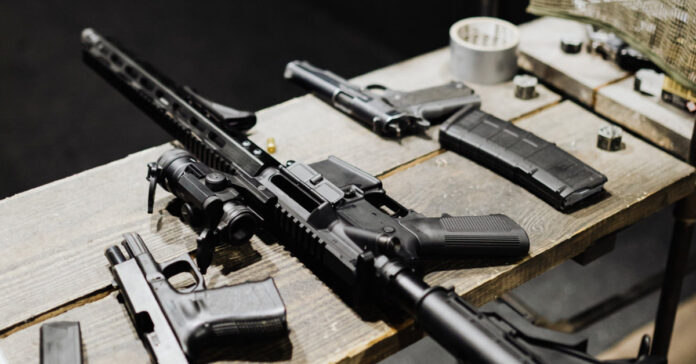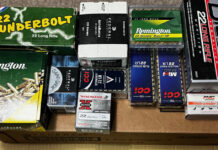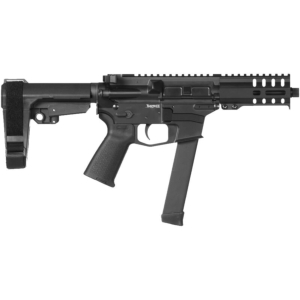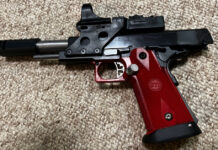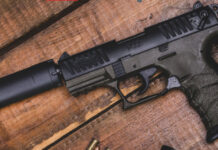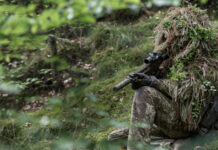How many kids named Micah or Levi are being harassed on college campuses or city streets by angry Palestinian sympathizers? How many people with Jewish decent are hiding that part of their ancestry these days? How many random people are being attacked because they might be Jewish or because they support Israel?
It’s a sad state of affairs.
These are dangerous times for all of us, and the war in the Middle East is making things worse. Considering the heightened threat level and possibility of sleeper cells or other violence, righteous people should carry concealed regardless of whether they are Jewish or have a biblical name (like Peter, which is Greek). Irrespective of your name, ethnicity or religious heritage, if you go into places where there may be violence you should also carry heavy.
What’s carry heavy? Let’s explore.
Concealed Carry versus Heavy Carry
People who carry concealed often carry compact or subcompact handguns that hold six to ten bullets. These guns are small and lightweight, so they are easy to carry. Someone who would leave a steel 1911 at home because it’s big and heavy will happily carry a Sig p365 Micro Compact.
You can’t blame people for carrying smaller guns. There are times when all I have on me is a 6-shot snub nose or a 10-shot Glock 48, although I often carry both. Compact guns have downsides, including limited capacity, short sight radius, less velocity, and maybe a weaker caliber.
There are statistics that say civilians rarely get into gun fights where they have to reload and most gunfights take place in less than 7 yards. That is an argument for small, lightweight guns. But those statistics are for random encounters with criminals, not for combatting gangs of angry militants looking to make an example of someone. Nor do they include protesters who want to tear you out of your car because you don’t look or act like them.
Heavy carry starts with a larger gun, preferably one that holds 15 or 17 rounds. It addresses the deficiencies of compact pistols with more capacity, longer sight radius, and a bullet of at least 9mm. This full-size pistol can carried be instead of or in addition to your usual concealed carry gun.
Heavy carry doesn’t end there. It entails keeping a larger, more powerful, more accurate and more controllable weapon close at hand, such as an AR pistol or a pistol-caliber carbine that folds down and fits in your gym bag or backpack. In your car or home, you should have rapid access to a full-size long gun, such as a rifle or shotgun.
Getting Gunned Up
We carry pistols because they are convenient, not because they are powerful. The purpose of your pistol is to fight your way to your long gun. That means you must have a long gun, and it should be somewhere you can access it relatively quickly.
If that isn’t clear, let me put it this way: a rifle in your safe at home while you are at work 17 miles away isn’t accessible. A rifle in your vehicle in the parking lot while you are in a building 150 feet away is better, but not perfect. Still, we sometimes have to compromise with rules and regulations. If you are in that situation, think about how you would access your rifle in an emergency. Consider where to park your vehicle. Maybe a spot where you can access your rifle through an emergency exit, even if it means you walk a little further to use the front door. (Also consider combat parking, meaning you back into the spot so you can pull out and drive off in one simple maneuver.)
For me, getting gunned up means a Glock 22 on my hip, backup revolver in my pocket, Keltec Sub-2000 in my EDC bag, and an AR15 in the car. The Sub 2000 uses the same magazines as the Glock 22, so I will have a minimum of five 15-round magazines plus at least one 31-round mag on me or in the bag.
At the house, it means a Remington 12 gauge upstairs, Mossberg 12 gauge downstairs, plus another AR15.
The hardest of these guns to access is the AR-15 in the locked contractor’s box on the back of my truck. I’ve already decided that if I go into “enemy territory,” I’m moving it to the cab before I leave home.
Lethal Force
If someone attacks you, most self-defense laws require you to respond with a commensurate level of force. If someone is yelling at you, for example, you can’t pull out your gun and shoot them. But a thrown brick can be lethal. A crowd of attackers, even if armed only with sticks and other blunt-force weapons, can make you fear for your life, especially if you have just witnessed them beat and kick someone else. That kind of disparity of force may allow you to shoot attackers and have the court rule it “justifiable homicide.” I’m no lawyer, and self-defense and castle doctrine law vary from state to state, so consult an attorney and study your local laws. Better still, stay out of dangerous areas, off college campuses, and away from town squares or other protest locations.
Of course, keeping your head down won’t protect you from getting attacked, as 1400 dead Israelis can attest. Even if you think you won’t be a target, you need to be prepared, just in case. We saw what happened in Israel when the populace was not armed. What’s your excuse?
Video of the Day
Here’s a lawyer’s interpretation of what an innocent (and scared) man did when caught in a protest, plus the attorney’s advice about what he could have done and when it is appropriate to shoot. Consider this a cautionary tale.

